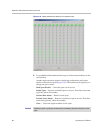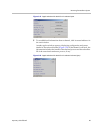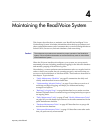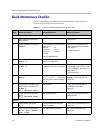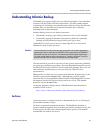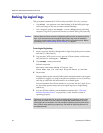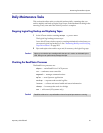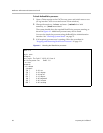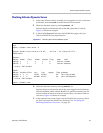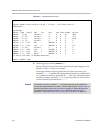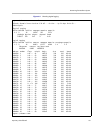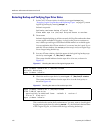
Maintaining the ReadiVoice System
Proprietary & Confidential 95
Even in the event of a catastrophic disk failure, the most recent archive tape
and current logical log tape let you recover all the transactions up to the point
where the last logical log file was written to tape. You never lose more than the
transactions in the logical log file being used at the time of the crash (assuming
no tape failure).
You can adjust the size of the logical log files so that they fill up and are written
to tape at a comfortable interval. For example, if it takes an average of eight
hours for each logical log to fill up, you may want to reduce their size so that
you don’t risk losing so much data in the event of a disk failure.
We strongly recommend backing up logical logs continually to tape. If you
don’t, and the logical logs on disk are unrecoverable due to a disk failure, then
you lose all transactions since the last archive. Since the log files must be sent
either to tape or to
/dev/null
, backing them up to tape costs you only the
price of the tapes and the time needed to change tapes and check the status of
the process periodically.
We recommend using at least three tapes in rotation for logical log backup.
Change tapes on at least a weekly basis and more often if necessary. Consider
rotating the oldest tape(s) to off-site storage for extreme disaster recovery.
“Backing Up Logical Logs” describes how to set up continual tape backup of
the logical logs. The procedures in “Daily Maintenance Tasks” on page 97
assume that you’re backing up logical logs to tape.
Caution!
Validate your logical log backups and, from time to time, test your ability to restore
from them. Don’t let the logical log backup tape become full. If it does, Informix
stops backing up logical logs, and when all logical logs are full, the database halts.
Tapes wear out over time. Label them with the date of first use and replace them
every six months.




